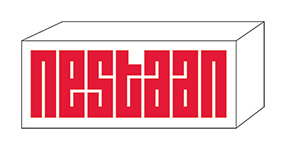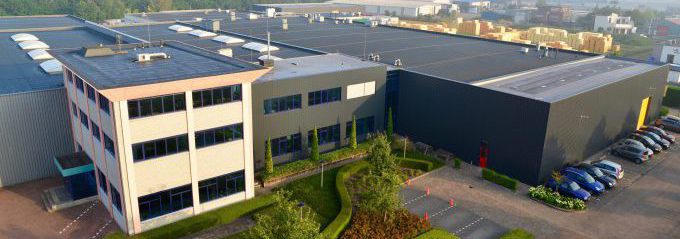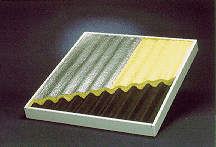Filling panels
In the (sandwich) panel industry polyurethane pouring systems are frequently used because of its high insulation value, the good dimensional properties and the adherence of PU to other materials. Insulated sandwich panels find their way to the market as for example wall- and roofing panels, panels for cold storages, garage doors, frigidaire or temperature conditioned trucks. Nestaan Holland has a vast variety of systems available, looking at reaction profile, insulation value, density, fire class and flow ability. The systems available can be divided in two production methods; continuous and discontinuous.
Continuous
At this production method, at the beginning of the production line, facings are fed into the machine. A facing is for example introduced from a coil. With material such as steel a pre-shaping can be applied just before the facings are transported to the lay down (where the reactive fluid mixture of A+B is laid down). Generally the top and bottom facings need to be preheated. The lay down is frequently done by using small pipes which dose the pouring system between the two linings. The continuous sandwich elements are then heated and pressed in a conveyer to guarantee a good curing and adhesion of the PUR. Hereafter the insulating elements become tailor made by cutting them to a specific size.
Discontinuous
With the discontinuous method an enormous variety of panels is made. Roughly the production methods can be distinguished by the dosing in an open or in a closed mould. In an open mould the bottom facing is laid in the mould. Within a number of seconds the still liquid mixed system is poured on the bottom facing. In small moulds, PU has sufficient flow ability to spread evenly. To ensure an even spread in larger moulds, a dosage rake is pulled across the mould whilst polyurethane is dosed onto the bottom facing until the whole mould is covered with fluid (or the mould moves underneath the dosing rake). Then the mould is closed. When using closed moulds, the system is injected into the cavity of the mould.







